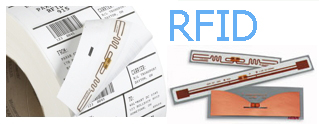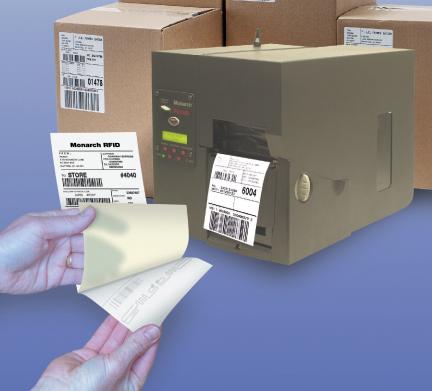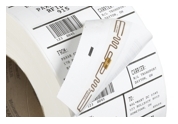|
| |
Radio
Frequency
Identification
Cette page en français, cliquer ici

|



 |
RFID - The Future Product Tracking Is Here
 RFID (Radio Frequency Identification) uses radio signals emanating from a tag
to transmit information for automatically identifying an item. Tags can
contain a large amount of data, allowing manufacturers, suppliers and
retailers to track and manage assets more efficiently.
RFID (Radio Frequency Identification) uses radio signals emanating from a tag
to transmit information for automatically identifying an item. Tags can
contain a large amount of data, allowing manufacturers, suppliers and
retailers to track and manage assets more efficiently.
Typical Uses
RFID is used today for tracking animals, library books, container
locations, building security, auto keyless entry and many more. One of the
most visible uses of the technology is for toll collections in heavily
populated areas (often called "EZ Pass" or something similar).
An RFID transmitter is placed on the vehicle of the subscriber. The
transmitter is "read" as the vehicle passes by the toll area,
automatically identifying the vehicle and debiting the owner's account.
Supply Chain Benefits
RFID has received much publicity over the past several years as a
complementary technology to bar codes. It is an especially attractive
technology for supply chain applications:
 | Tags can be read without contact and/or line-of-sight (do not have to see a tag
to read it)
|
 | RFID readers can differentiate and read multiple items simultaneously
|
 | RFID tags can be updated with new information as items pass through the
supply chain (read/write capabilities)
|
 | The potential cost savings for supply chain applications include:
 | Reduce safety stock inventory requirements |
 | Reduce labor requirements (receiving, inventory, etc.) |
 | Improve inventory “shrink” problems |
 | Improve visibility of assets, as they move through the supply chain |
|
Open Issues with Implementation
Despite all the hype, many open issues with the technology remain. Until
these issues are resolved, widespread implementation is not anticipated.
Major issues to be resolved include:
 | Lack of standards for the data structures to be used with RFID.
|
 | RFID labels and tags are cost-prohibitive for many applications.
|
 | Tag size is dependent on the read range desired, making tags too large for small item marking.
|
 | Software infrastructures are largely undeveloped and support multiple
technologies with no standardization.
|
 | Various frequencies provide various costs, ranges, read-rates, and reader
requirements, leading to confusion.
|
 | Consumer groups have expressed concern over the potential (real or imagined)
privacy invasion that would result with widespread RFID item marking.
|
|
Our first RFID printer:
Monarch 9855-RFID printer (documentation)
Recent Updates
Several large retailers and consumer goods manufacturers have announced
plans to use RFID for a variety of applications. Of particular importance
to the retail supply chain is Wal-Mart’s announcement that they will
require their top 100 suppliers to be RFID compliant, at the pallet and
carton level, by the year 2005.
The UCC (Uniform Code Council)
is working to standardize data structures, based on the
EPC (Electronic Product Code),
and has taken over the management of Auto ID
center from MIT. The new organization is called EPCglobal,
and its mission is to commercialize RFID.
With Wal-Mart’s
requirements, there is increased focus at UCC to publish standards by 4th quarter, 2004.
With standards in place, there will be clear direction for companies to invest in the
technology to drive down cost and overcome the major issues.
|

Monarch 9855 RFID printer

RFID label
|
RFID Showcase
Pallet labeling and verification at METRO AG in germany see
this document.
RFID with Liquids and Metals
Liquids and metals can interfer seriously with RFID, here is our solution
in this document.
GOMARO’s Commitment
GOMARO s.a. is committed to aggressively participate in the developing market for RFID products.
Our goal is to become a major source for RFID supplies and the printers which
program them for all popular RFID systems.
GOMARO s.a. is focusing its efforts in the following areas:
 | Development of low cost RFID supply alternatives.
|
 | Utilizing our 9800 series printer platform to
read and write RFID labels. |
|
|